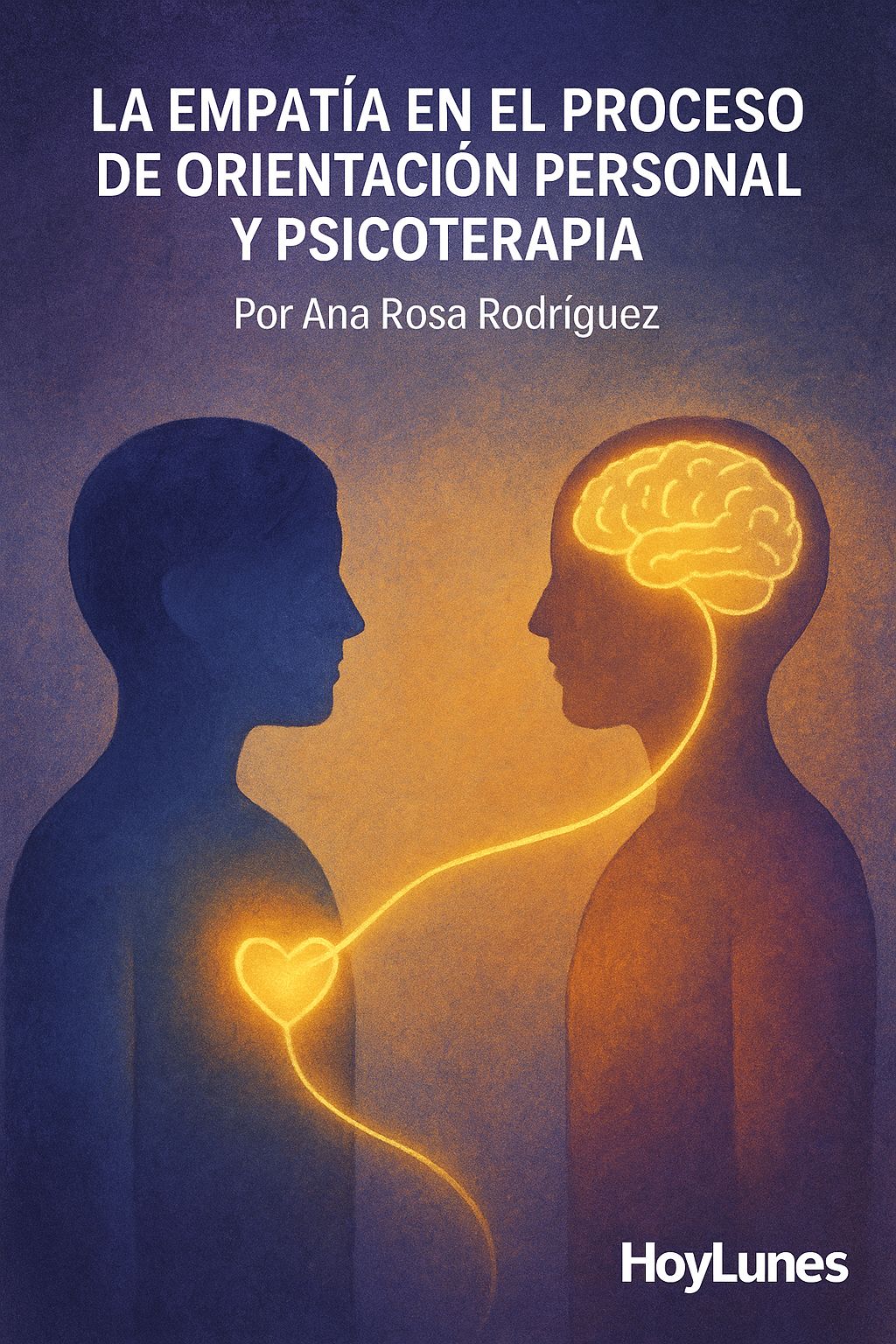Empathy as a bridge: how listening, understanding, and accompanying transform both the guide and the one seeking growth.
By Ana Rosa Rodríguez
HoyLunes – In professional personal guidance and psychotherapy, the primary objective is to help people better understand themselves. To achieve this, strategies are offered, and a psycho-emotional environment is provided that enables them to improve their psychological well-being and quality of life.
Systemic research on the guidance process has scientifically demonstrated that empathy is one of the human conditions that most energizes the process of change and transformation. Empathy not only benefits the person being guided but also transforms the guide. This synergistic, interpersonal process between guide and guided is considered a decisive point in the permanent and continuous construction toward the desired level of personal growth.
Among the earliest conceptions of the complex phenomenon of empathy are those from the field of aesthetics, as perceived in the contemplation of a work of art—whether literary, architectural, sculptural, pictorial, or any form of human artistic creation.

Theoretical studies that can be consulted regarding the evolution of the term “empathy” and its meanings can be understood through extensive literature that spans from German Romanticism, with its artistic intuition, to a more scientific treatment by authors and researchers such as F. Lotze, R. Fischer, Volket, and Gross. Finally, it was Lipps who formulated the definition of empathy, relating it to classical and abstract art. Although the term has many common connotations in aesthetics as well as in other philosophical or psychological fields, empathy—regardless of the perspective from which it is approached, and for reasons that are evident to professionals in guidance—always functions in relation to the other. The empathic process is never directed toward oneself, because what it seeks to explain is how another’s feeling is perceived.
Carl Rogers, one of the main exponents of the transpersonal approach in guidance and psychotherapy, describes empathy as an essential factor for the effectiveness of the guidance process. For this reason, the ability to approximate the perception of another’s emotional characteristics largely determines the effectiveness of the process.
A professional in the field of personal guidance, dedicated to offering psycho-emotional and affective support to others in their journey of self-realization, must feel capable of recognizing their own feelings, interpreting and classifying their emotions, and precisely identifying their predominant mood in communication with others. Only in this way can they establish a relationship based on the authenticity and congruence of their own feelings, in order to promote a genuinely empathetic helping relationship that yields positive results.

This openness to self-observation on the part of the guide, in relation to the processes of another’s feelings, is closely linked to an analogous attitude of understanding and acceptance toward the guided, free from value judgments. This facilitates the guided person’s discovery of previously unacknowledged feelings, attitudes, and ways of being—and from there, the exploration of new facets and sensations regarding aspects of themselves that were once denied for fear of rejection. Seeing the authenticity of their initially confusing feelings leads them to a commitment and enthusiasm for ongoing exploration and review of their actions, resulting in more secure decisions that are more useful for themselves and their environment.
It is important to explain that, in the guidance process, the correlation between the guide’s empathic understanding and acceptance of the guided person’s feelings and attitudes, and the meaning and value that the guided person attributes to that attitude, must be studied. In this sense, the relationship process can work either to the benefit or detriment of the one receiving help. In either case, it is undeniable that guidance focuses on the basic dimensions of personality development and change, fostering maturation and growth as a person.
Indeed, current research in the field of guidance as a helping profession shows that the positive results of the guidance process stem fundamentally from the human factors that influence the relationship established between guide and guided.

For this reason, the guidance professional, being aware of the importance of accompanying others toward personal maturity and self-realization, will strive to be fully present in their entire being, with their “being-in-itself”—whole, unified, and available—avoiding stereotyped archetypes and the façades of masks. In other words, they must be transparent, without pretension or disguise, attending carefully to the call for authenticity and honesty in human interaction.
It is therefore undeniable that the guide’s dedication to being empathetic, in order to understand the internal frame of reference of the guided, broadens their sensitivity to verbal and non-verbal messages. This allows them to interpret a deeper sense of knowledge and the complexity of human feeling, and thus the desire to explore their own way of being, enriching themselves in the process.
Recommended reading: *Being Myself, the Power of Selfhood*, by Ana Rosa Rodríguez. Available on Amazon’s KDP platform: [https://amzn.to/39EtEZa](https://amzn.to/39EtEZa)

#hoylunes, #ana_rosa,



